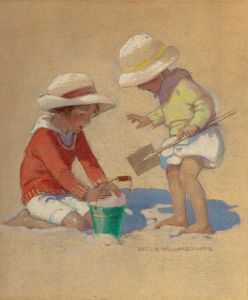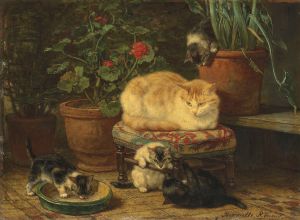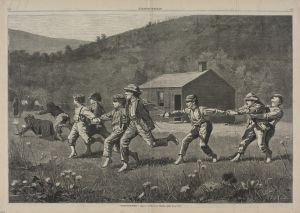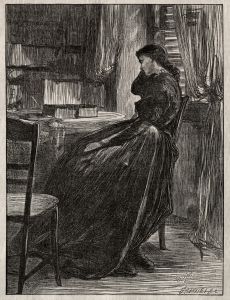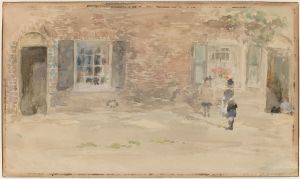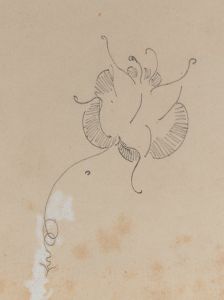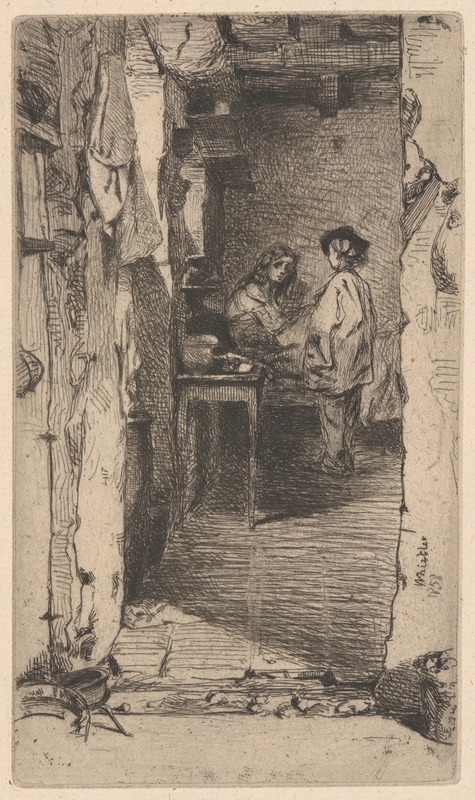
Little Rag Gatherers
A hand-painted replica of James Abbott McNeill Whistler’s masterpiece Little Rag Gatherers, meticulously crafted by professional artists to capture the true essence of the original. Each piece is created with museum-quality canvas and rare mineral pigments, carefully painted by experienced artists with delicate brushstrokes and rich, layered colors to perfectly recreate the texture of the original artwork. Unlike machine-printed reproductions, this hand-painted version brings the painting to life, infused with the artist’s emotions and skill in every stroke. Whether for personal collection or home decoration, it instantly elevates the artistic atmosphere of any space.
James Abbott McNeill Whistler, an influential American artist, is renowned for his contributions to the art world during the late 19th century. One of his lesser-known works, "Little Rag Gatherers," exemplifies his unique style and approach to capturing everyday life. Whistler, who was born in 1834 in Lowell, Massachusetts, spent much of his career in Europe, where he developed his distinctive artistic voice.
"Little Rag Gatherers" is a painting that reflects Whistler's interest in the lives of ordinary people, a theme that recurs throughout his oeuvre. The painting depicts children engaged in the humble activity of gathering rags, a common sight in urban areas during the 19th century. This subject matter aligns with Whistler's broader artistic focus on the beauty and complexity of mundane scenes, a perspective that was somewhat unconventional at the time.
Whistler's approach to painting was heavily influenced by his belief in "art for art's sake," a philosophy that emphasizes the intrinsic value of art, independent of moral or narrative content. This belief is evident in "Little Rag Gatherers," where the emphasis is placed on composition, color, and form rather than on a specific story or message. Whistler's use of color and light in the painting demonstrates his mastery of tonal harmony, a technique he admired in the works of earlier artists such as Diego Velázquez and J.M.W. Turner.
The painting is characterized by its subtle palette and delicate brushwork, which create a sense of atmosphere and mood. Whistler often employed a limited color scheme to achieve a harmonious effect, and "Little Rag Gatherers" is no exception. The muted tones and soft transitions between light and shadow contribute to the painting's overall sense of tranquility and introspection.
Whistler's work, including "Little Rag Gatherers," was part of a broader movement that sought to challenge the traditional boundaries of art. By focusing on everyday subjects and emphasizing aesthetic qualities over narrative content, Whistler helped pave the way for modernist movements that would emerge in the early 20th century. His influence can be seen in the works of later artists who similarly sought to capture the beauty of ordinary life through innovative techniques and perspectives.
While "Little Rag Gatherers" may not be as widely recognized as some of Whistler's other works, such as "Arrangement in Grey and Black No. 1" (commonly known as "Whistler's Mother"), it remains an important example of his artistic philosophy and style. The painting reflects Whistler's commitment to exploring the nuances of human experience through art, as well as his ability to find beauty in the seemingly mundane.
In summary, "Little Rag Gatherers" by James Abbott McNeill Whistler is a testament to the artist's skill and vision. Through its focus on everyday life, harmonious composition, and subtle use of color, the painting encapsulates Whistler's belief in the power of art to transcend conventional narratives and evoke a deeper appreciation for the world around us.






